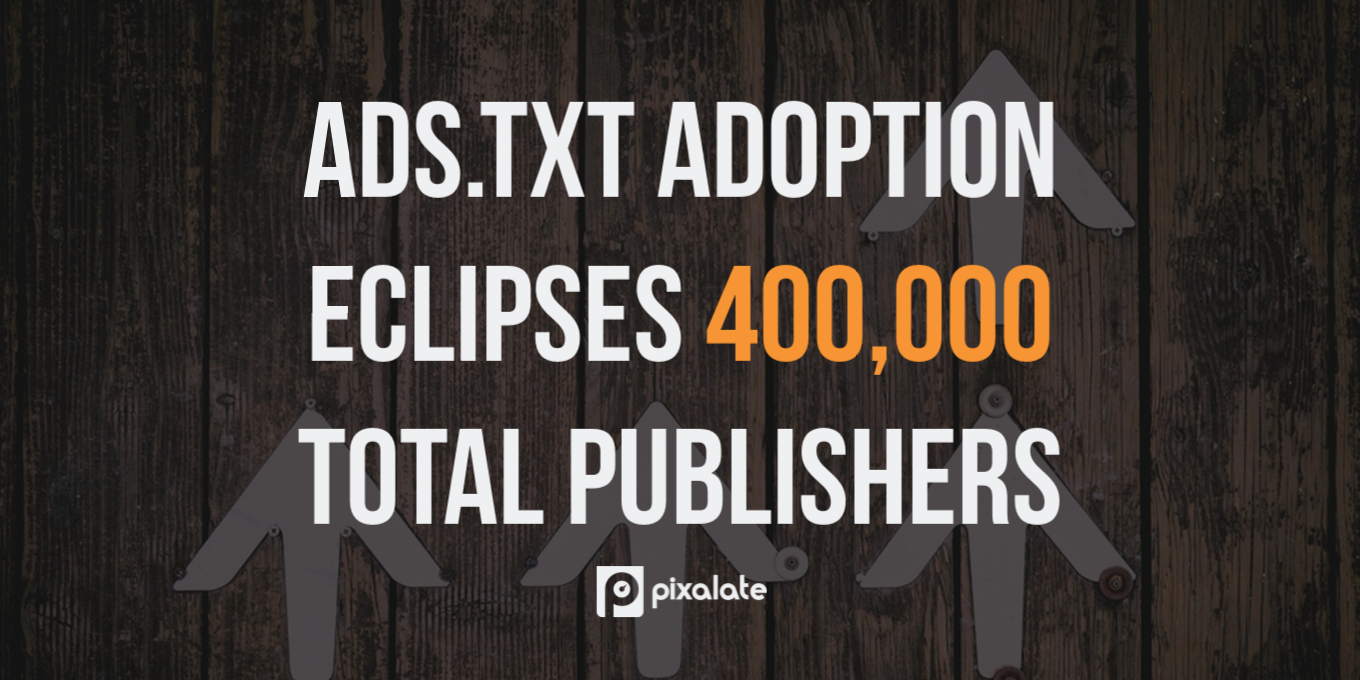
This blog series provides a weekly summary highlighting some of the key takeaways as the programmatic industry adopts ads.txt, the IAB-led anti-ad fraud initiative.
Pixalate has also made available for download the full list of publishers with ads.txt implemented, which also gets updated weekly.
To see the new Q1 2018 Ads.txt Trends Report, go here.
Ads.txt adoption reached several new highs this week:

Here are the latest ads.txt adoption figures, as of April 16, 2018.
As of this writing, 408,354 publishers have implemented ads.txt.
This represents an increase of 12,961 compared to last week.
According to Pixalate’s research, the total number of publishers with ads.txt was 89,638 as of January 1, 2018.
Nearly 320,000 new publishers have implemented ads.txt since then — representing a rise of about 356%.

Of the top 1,000 sites based on programmatic advertising volume (the “Pixalate Top 1,000”), 741 sites have implemented ads.txt — or 74.1%.
This represents an increase of six (6) new publishers since last week.
This number is up from 571 on January 1, representing a year-to-date rise of just under 30%.
Of the top 5,000 sites based on programmatic advertising volume (the “Pixalate Top 5,000”), 3,603 sites have implemented ads.txt — or 72%.
This indicates that an additional 53 sites within the Pixalate Top 5,000 implemented ads.txt in the past week.
This number is up from 2,355 on January 1, representing a year-to-date rise of 53%.
As of this writing, 362 Alexa Top 1,000 publishers have implemented ads.txt — or 36.2%.
This number is up from 220 on January 1, representing a year-to-date rise of 64.55%
Last week, Pixalate measured 360 Alexa Top 1,000 publishers as having implemented ads.txt. Publishers can move in and out of these top rankings.
As of this writing, 1,627 Alexa Top 5,000 publishers have implemented ads.txt — or 32.54%.
This number is up from 1,013 on January 1, representing a year-to-date rise of nearly 61%.
Last week, Pixalate measured 1,604 Alexa Top 5,000 publishers as having implemented ads.txt. Publishers can move in and out of these top rankings.
You can download the full list of publishers with ads.txt here:
Want more data-driven insights? Sign up for our blog!
*By entering your email address and clicking Subscribe, you are agreeing to our Terms of Use and Privacy Policy.
These Stories on Research Reports
*By entering your email address and clicking Subscribe, you are agreeing to our Terms of Use and Privacy Policy.

Disclaimer: The content of this page reflects Pixalate’s opinions with respect to the factors that Pixalate believes can be useful to the digital media industry. Any proprietary data shared is grounded in Pixalate’s proprietary technology and analytics, which Pixalate is continuously evaluating and updating. Any references to outside sources should not be construed as endorsements. Pixalate’s opinions are just that - opinion, not facts or guarantees.
Per the MRC, “'Fraud' is not intended to represent fraud as defined in various laws, statutes and ordinances or as conventionally used in U.S. Court or other legal proceedings, but rather a custom definition strictly for advertising measurement purposes. Also per the MRC, “‘Invalid Traffic’ is defined generally as traffic that does not meet certain ad serving quality or completeness criteria, or otherwise does not represent legitimate ad traffic that should be included in measurement counts. Among the reasons why ad traffic may be deemed invalid is it is a result of non-human traffic (spiders, bots, etc.), or activity designed to produce fraudulent traffic.”

